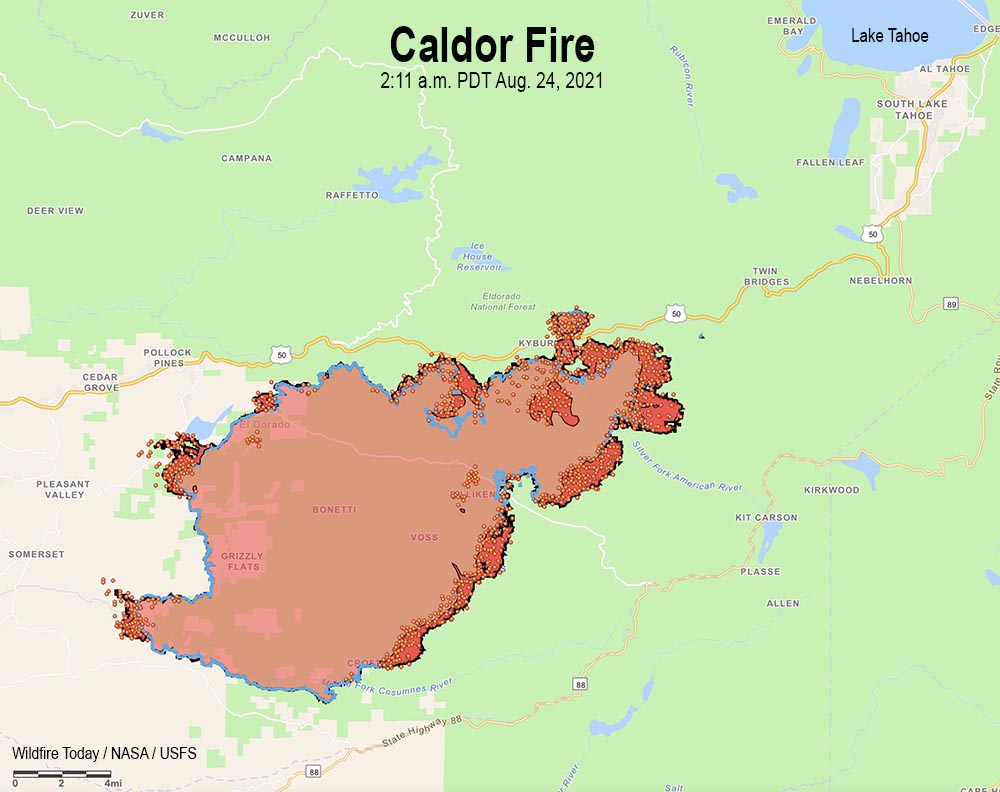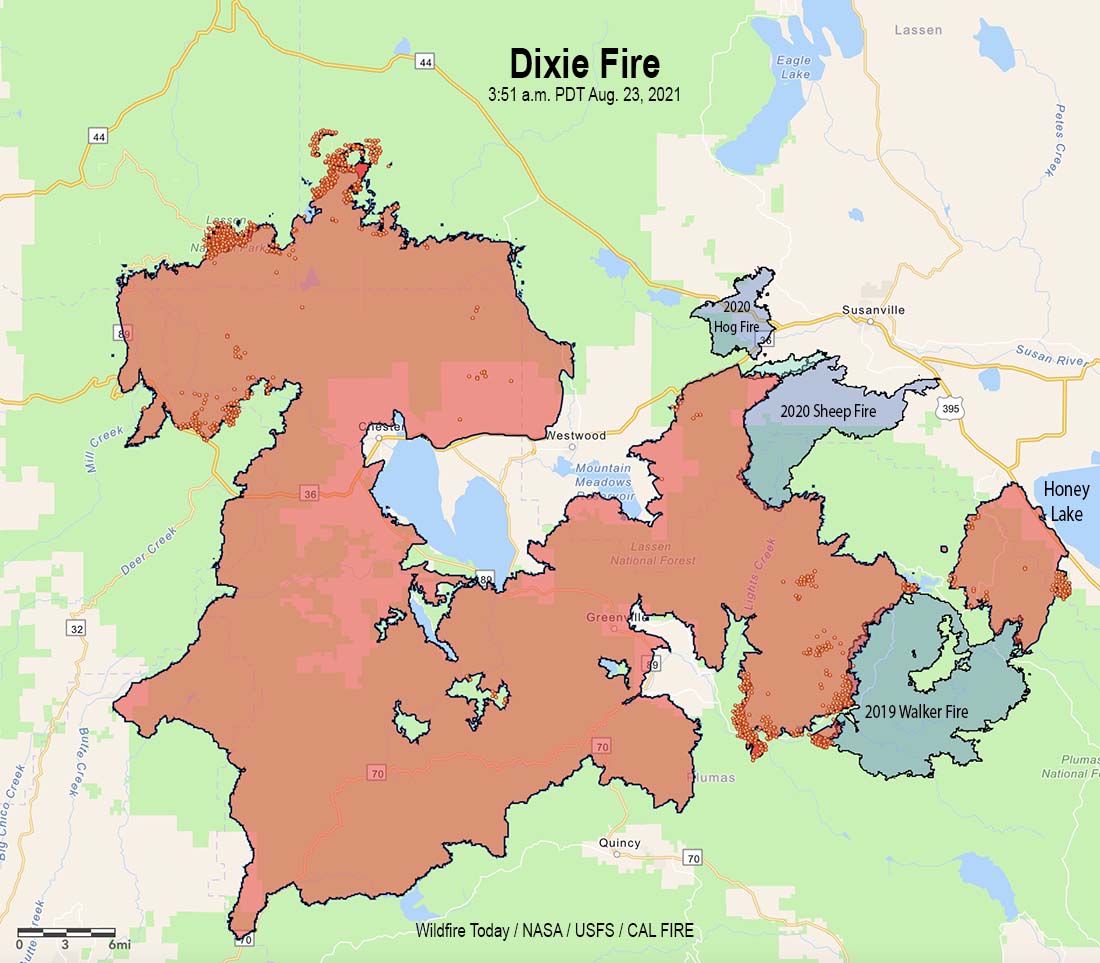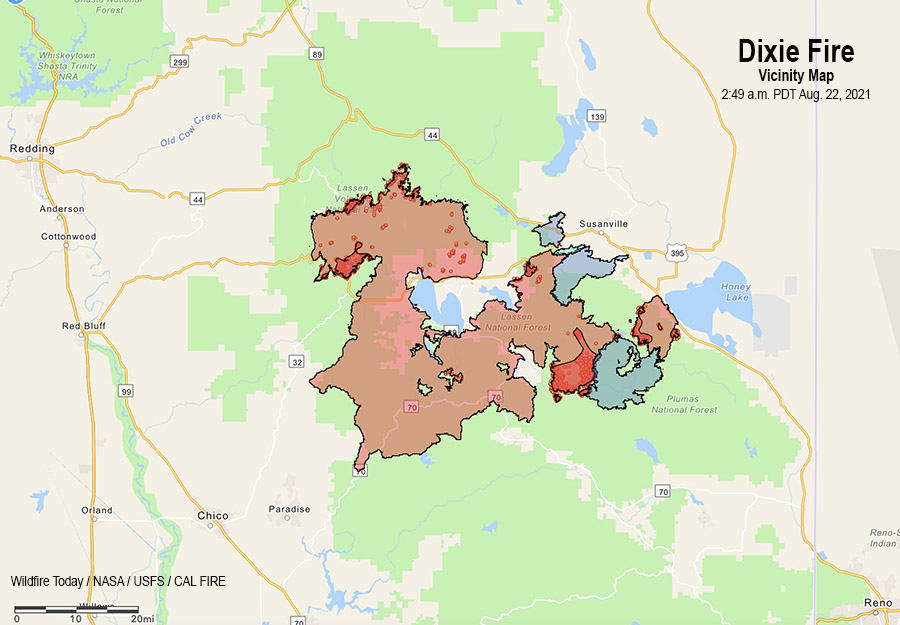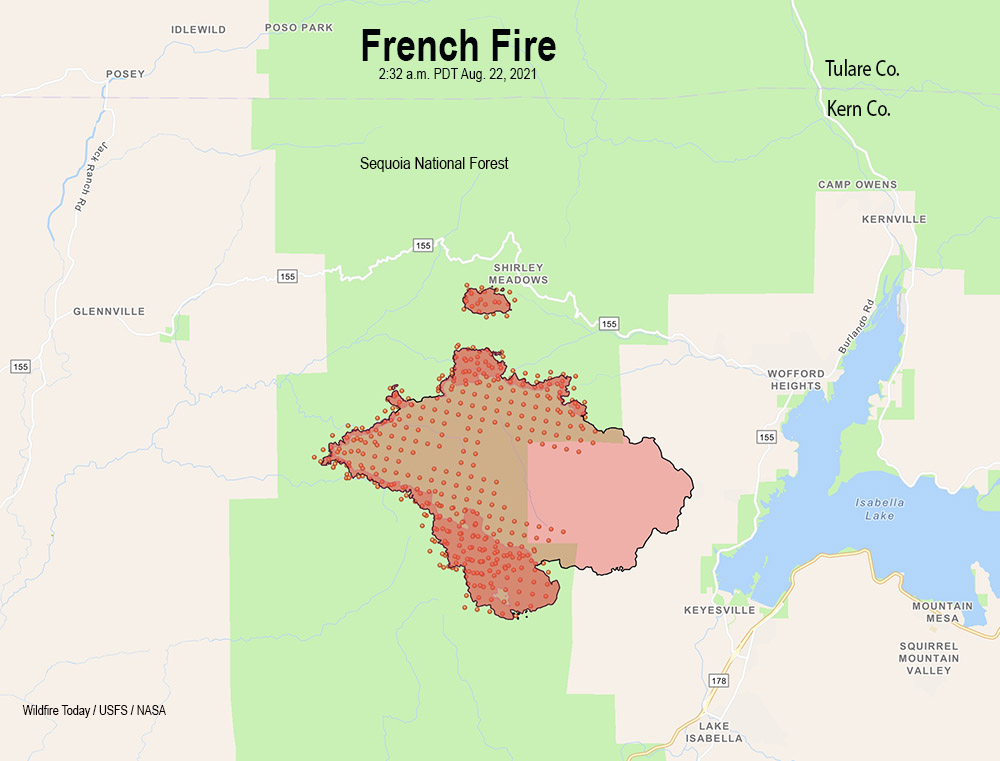7:51 a.m. PDT August 26, 2021

The northeast side of the 136,000-acre Caldor Fire 12 miles southwest of Lake Tahoe was active Wednesday night. The fire added about 10,000 acres over the last 24 hours. The spot fire north of Highway 50 has continued to spread east, growing to approximately 2,600 acres. The photo below was taken in that area.
To see all articles on Wildfire Today about the Caldor Fire, including the most recent, click HERE.

The weather forecast for Thursday predicts 7 to 8 mph winds out of the southwest and northwest with relative humidity in the teens. Friday will be about the same but with lower humidity. These conditions will allow the fire to keep spreading.
Resources assigned as of Wednesday evening included 243 fire engines, 27 water tenders, 21 helicopters, 80 hand crews, and 51 dozers for a total of 2,897 personnel.

Firefighters on the 126,000-acre Caldor Fire are hoping to slow the spread with extensive use of dozers. They are constructing firelines out ahead from which they plan to ignite backfires or other burning operations. This will remove the available fuel so that when the fire reaches those barriers it will stop, at least at those locations.
The fire is still about 14 miles southwest of Lake Tahoe.
On the map below produced by the Incident Management Team the “xxxxxx” indicates dozer lines completed at the end of the day August 24. Crews are working on extending these lines and tying in the various segments. Air tankers are slowing the spread on the northeast side in Division J to give the dozers time to complete the lines.

On Wednesday the fire primarily spread to the northeast along Highway 50 toward Twin Bridges. Firing operations continued on the southwest side but were slowed by numerous small spot fires that were quickly extinguished. The north side of the fire is backing downhill to the north toward Highway 50 achieving results not unlike a well-planned prescribed fire.
The spot fire across Highway 50 has grown to about 2,000 acres and spotted to the east across Wrights Lake Road.
The weather conditions recorded at Barney Ridge were moderate in the afternoon with 5 to 8 mph winds gusting at 12 to 16 mph out of the southwest while the relative humidity was around 20 percent. The forecast for Thursday is for 8 to 11 mph winds out of the west with humidity in the mid-teens.
The fire has destroyed 465 residences and 178 other structures. The El Dorado County Sheriff in collaboration with CAL FIRE has released a map displaying properties that have been inspected for any damage or that have been destroyed by the Caldor Fire.
Continue reading “Firefighters on Caldor Fire concentrating on dozers and firing operations”










